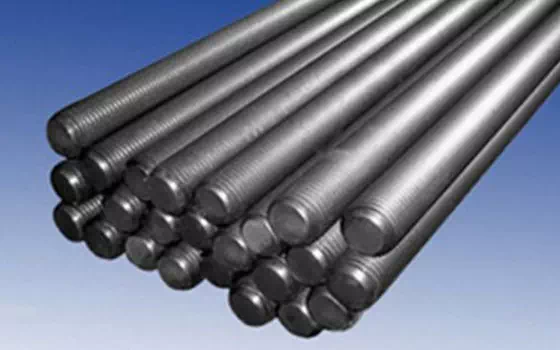Dec 11, 2023
Carbon steel, alloy steel silly can not be clear, poke here!
Carbon steel here is actually carbon steel, and stainless steel can be regarded as a branch of alloy steel.
Get a free quote quickly!
Dec 11, 2023
Carbon steel here is actually carbon steel, and stainless steel can be regarded as a branch of alloy steel.
When buying fasteners, we all need to determine whether the material is carbon steel or stainless steel. Carbon steel here is actually carbon steel, and stainless steel can be regarded as a branch of alloy steel. As an important raw material for manufacturing, carbon steel and alloy steel are widely used in various fields and are also important raw materials for the production of fasteners.
Yesterday, a friend asked, what is carbon steel? What is alloy steel? What's the difference between the two? Now, let me tell you all about it.
What is carbon steel and alloy steel?
1. let's look at what carbon steel is. As we all know, steel is an alloy of iron and carbon. The carbon steel (referred to as carbon steel) is the carbon content of less than 2.11% iron carbon alloy, its chemical composition, in addition to iron and carbon, there are limited amounts of silicon, manganese, phosphorus, sulfur and other impurities, there will be no other alloying elements.
The output of carbon steel accounts for about 80% of the total output of steel, and is widely used in construction, Bridges, railways, vehicles, ships, machinery manufacturing, industry, petrochemical, Marine development and other fields.
2. let's look at what alloy steel is. Alloy steel is a steel that adds one or more other alloying elements, such as chromium, nickel, tungsten, titanium, vanadium, manganese, copper, aluminum, molybdenum, etc., on the basis of carbon steel in order to increase the specific properties of steel. These chemical elements are added in different proportions/combinations to make the material have different effects, such as increasing hardness, improving corrosion resistance, increasing strength, improving formability, changing weldability, etc.
The output of alloy steel accounts for about 20% of the total output of steel, widely used in machinery manufacturing, petrochemical, construction, daily chemical, medical equipment, synthetic fibers, transportation and other fields.
Classification of carbon steel and alloy steel
The classification of carbon steel according to the carbon content can be divided into: low carbon steel, medium carbon steel, high carbon steel; The higher the carbon content, the higher the hardness and the lower the toughness.
Low carbon steel: carbon content C%≤0.25%, commonly used in the manufacture of fasteners are A3 steel, Q215A steel, Q235 steel, 20# steel, 22# steel, etc.
Medium carbon steel: carbon content 0.25% < C%≤0.45%, commonly used in the manufacture of fasteners are 35# steel, 45# steel and so on;
High carbon steel: carbon content C% > 0.45%, the market basically will not use high carbon steel manufacturing fasteners, because of its high carbon content, the material is hard and brittle, easy to break.
The classification of alloy steel according to the total content of alloying elements is divided into: low alloy steel, medium alloy steel, high alloy steel, different alloy content and composition, different properties.
Low alloy steel: total alloy content ≤5%;
Medium alloy steel: 5% < total alloy content ≤10%
High alloy steel: alloy content > 10%.
Commonly used to manufacture fasteners are: 30CrMo, 40Cr, 35CrMo, 42CrMo and so on.

3. Characteristics of carbon steel and alloy steel
The characteristics of carbon steel depend on its carbon content, the higher the carbon content, the strength and hardness will increase, and the plasticity, toughness and weldability will decrease. The advantages include good plasticity, good weldability; Cheap and easy to smelt; Good processing technology; The performance can be improved by adjusting the carbon content or changing the processing method; Disadvantages include slightly poor strength; Poor hardenability; Low temperature resistance is insufficient; Low corrosion resistance; Low magnetic permeability; Easily magnetized in a magnetic field.
The characteristics of alloy steel vary depending on the alloying elements added. The advantages include good comprehensive performance; Suitable for special purposes; High strength and toughness; Good hardenability and not easy to deformation and cracking; Good wear resistance and corrosion resistance; Low temperature, high temperature, non-magnetic, etc. Disadvantages include higher price; The molding process and heat treatment process are more complicated.
4. the use of carbon steel and alloy steel
Carbon steel is often used in the manufacture of various building components, containers, boxes, furnace bodies and agricultural machinery can carry small parts of the pad iron cotter tie rod stamping parts and welding parts. Carbon steel Q215A for the manufacture of fasteners is suitable for the manufacture of gaskets Q235 for the manufacture of bolts, nuts, screw sets, cotter pin rivets and other products for 4.8 class bolts, 4 class nuts, small screws and other products without hardness requirements 35# 45# is a high-quality carbon steel structure for the manufacture of 8.8 class bolts and 8 class nuts and 8.8 class hex fasteners.